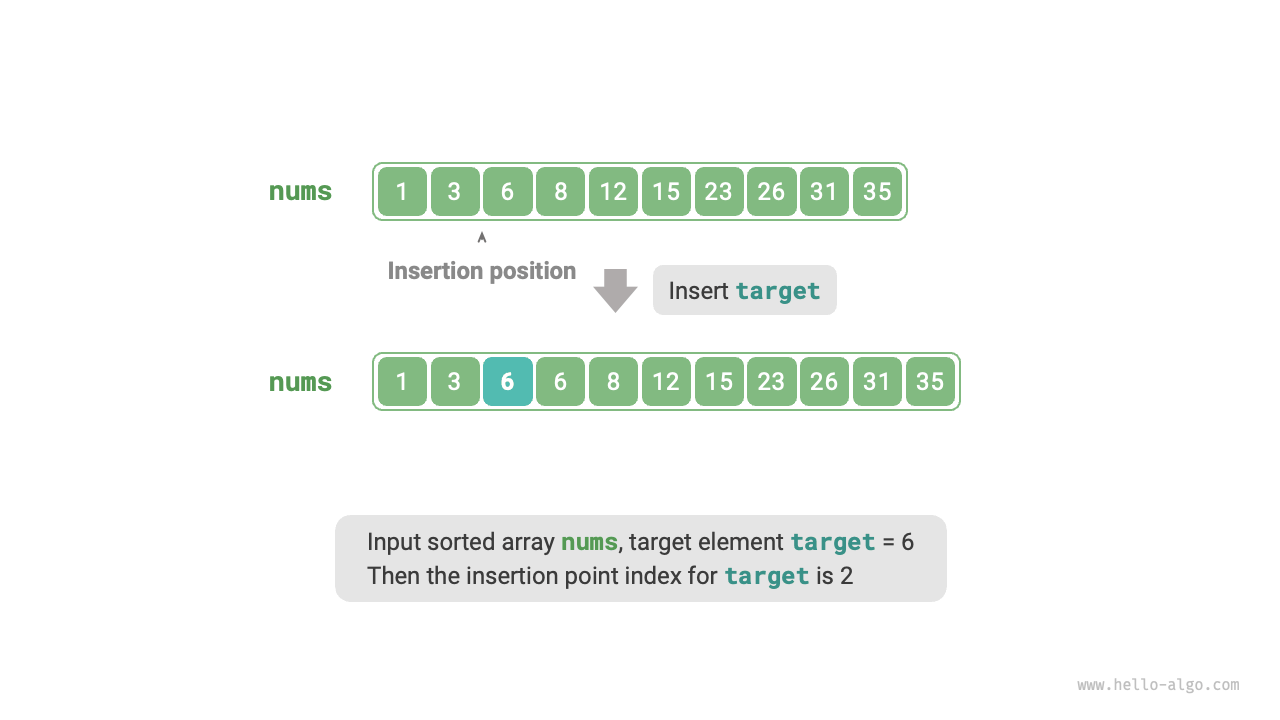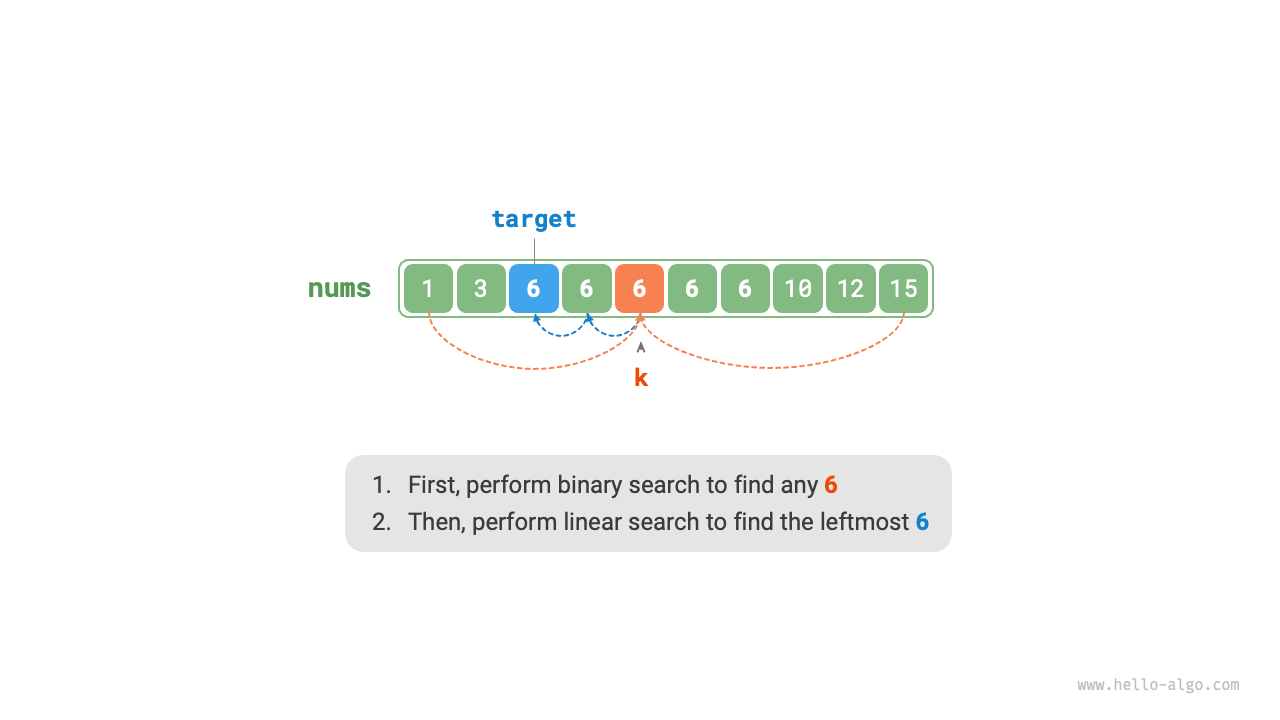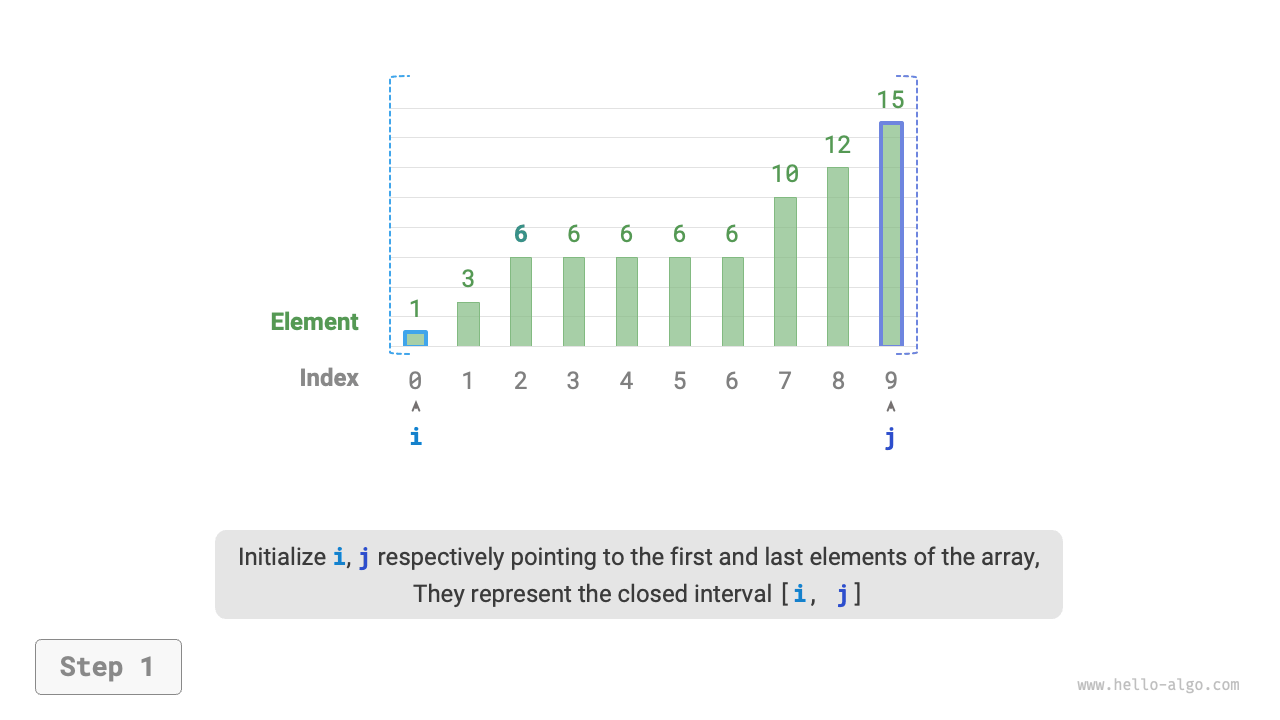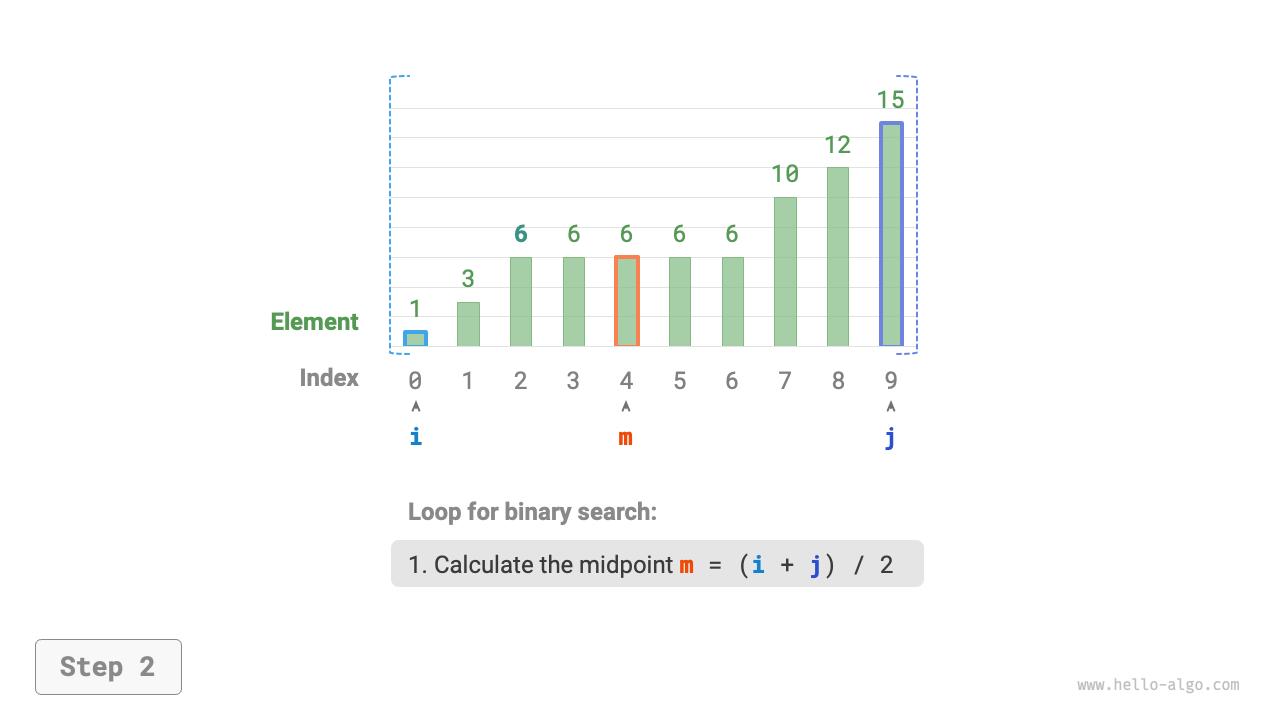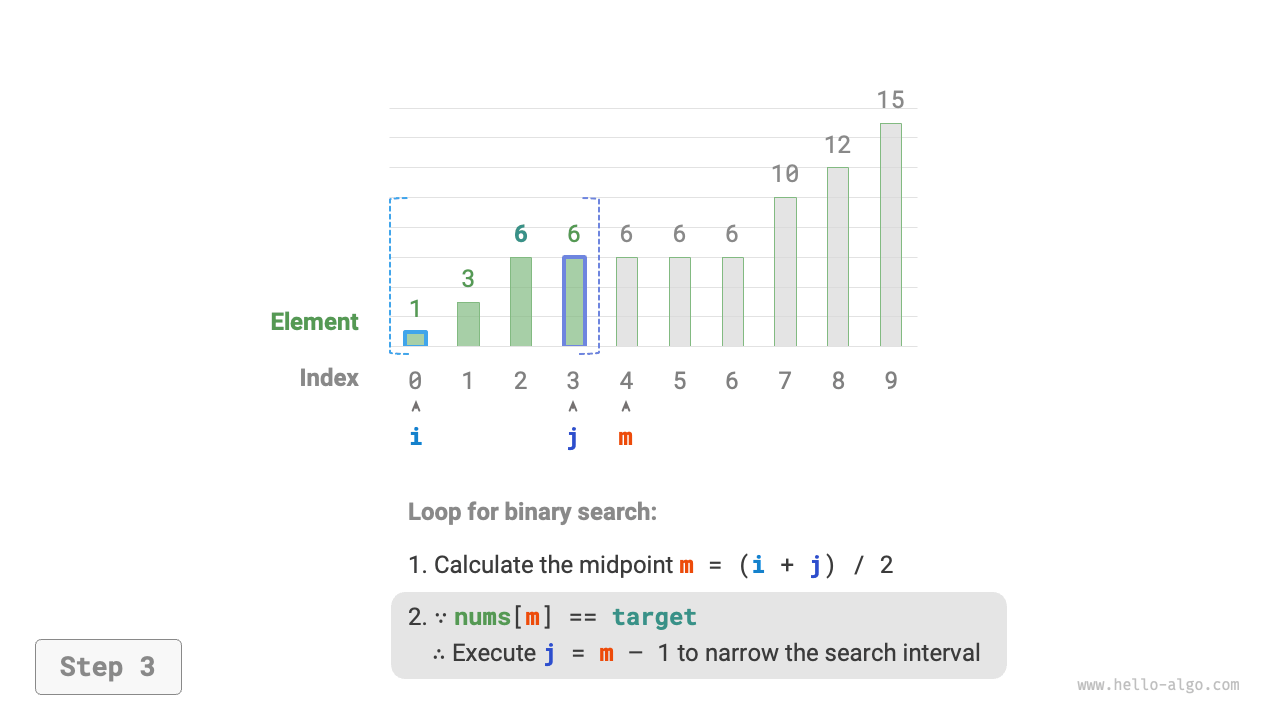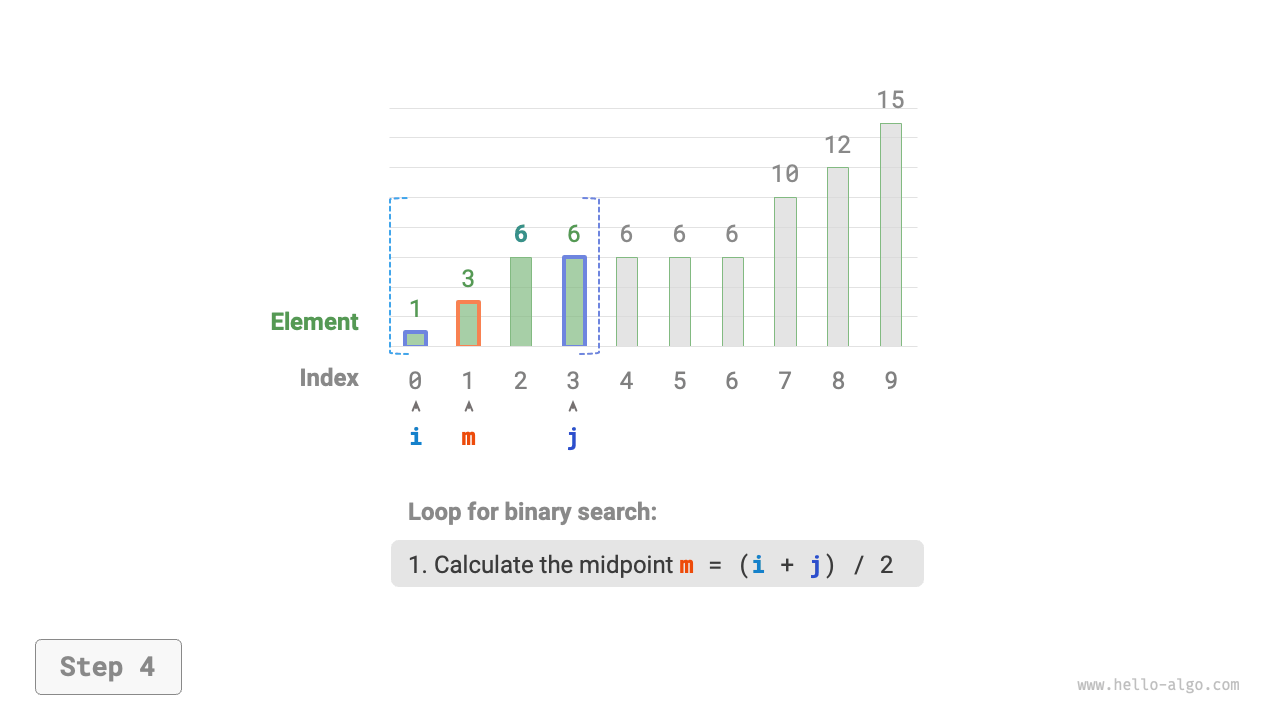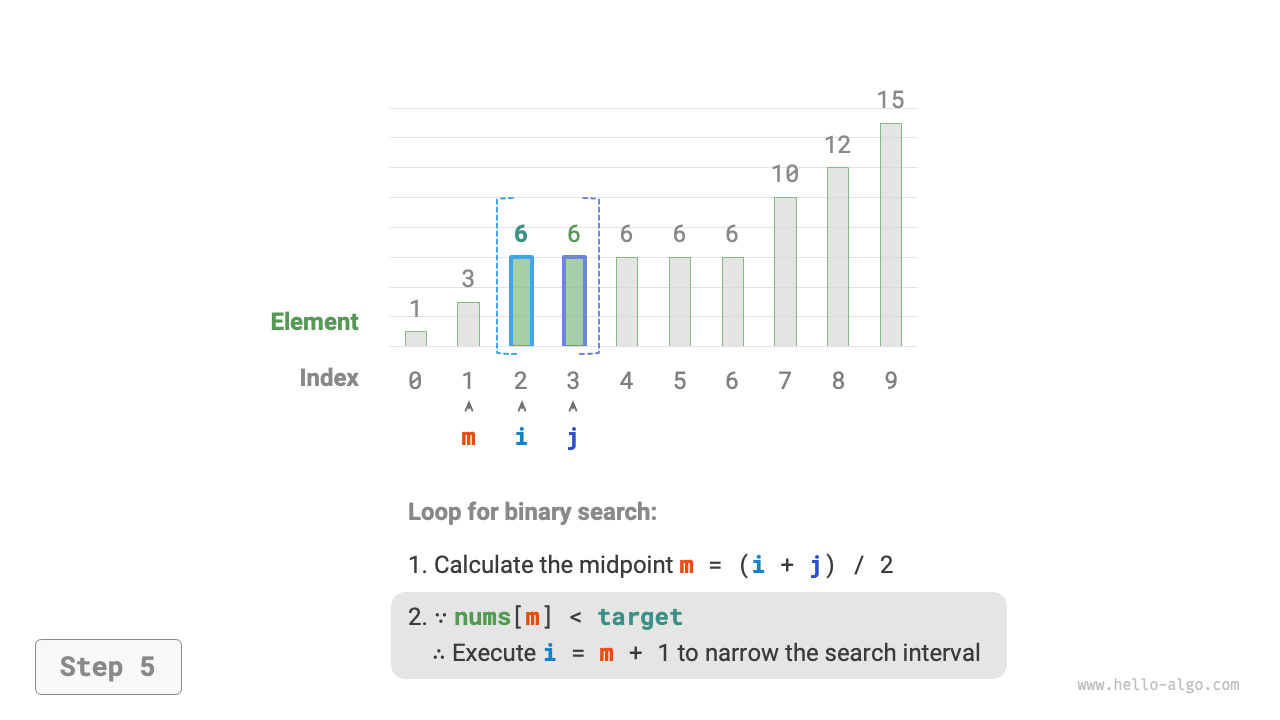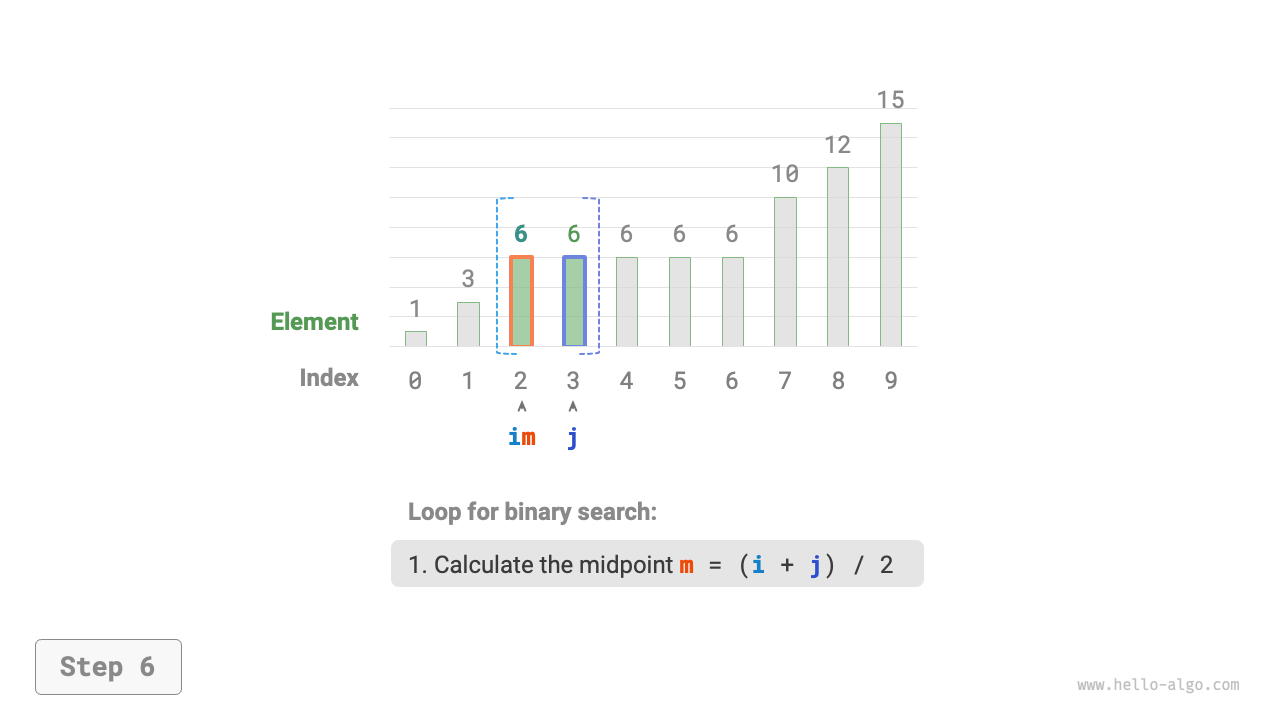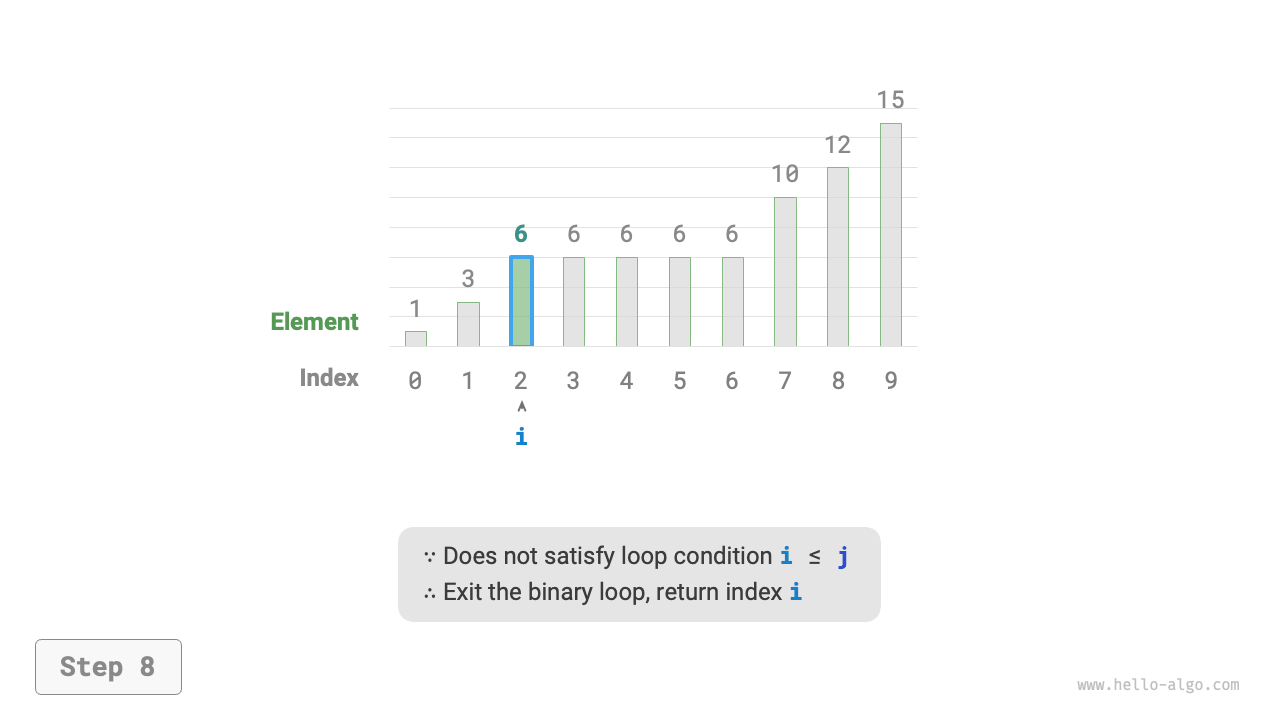10.2 Binary search insertion¶
Binary search is not only used to search for target elements but also to solve many variant problems, such as searching for the insertion position of target elements.
10.2.1 Case with no duplicate elements¶
Question
Given an ordered array nums of length \(n\) and an element target, where the array has no duplicate elements. Now insert target into the array nums while maintaining its order. If the element target already exists in the array, insert it to its left side. Please return the index of target in the array after insertion. See the example shown in Figure 10-4.
Figure 10-4 Example data for binary search insertion point
If you want to reuse the binary search code from the previous section, you need to answer the following two questions.
Question one: When the array contains target, is the insertion point index the index of that element?
The requirement to insert target to the left of equal elements means that the newly inserted target replaces the original target position. Thus, when the array contains target, the insertion point index is the index of that target.
Question two: When the array does not contain target, what is the index of the insertion point?
Further consider the binary search process: when nums[m] < target, pointer \(i\) moves, meaning that pointer \(i\) is approaching an element greater than or equal to target. Similarly, pointer \(j\) is always approaching an element less than or equal to target.
Therefore, at the end of the binary, it is certain that: \(i\) points to the first element greater than target, and \(j\) points to the first element less than target. It is easy to see that when the array does not contain target, the insertion index is \(i\). The code is as follows:
def binary_search_insertion_simple(nums: list[int], target: int) -> int:
"""Binary search for insertion point (no duplicate elements)"""
i, j = 0, len(nums) - 1 # Initialize double closed interval [0, n-1]
while i <= j:
m = i + (j - i) // 2 # Calculate midpoint index m
if nums[m] < target:
i = m + 1 # Target is in interval [m+1, j]
elif nums[m] > target:
j = m - 1 # Target is in interval [i, m-1]
else:
return m # Found target, return insertion point m
# Did not find target, return insertion point i
return i
/* Binary search for insertion point (no duplicate elements) */
int binarySearchInsertionSimple(vector<int> &nums, int target) {
int i = 0, j = nums.size() - 1; // Initialize double closed interval [0, n-1]
while (i <= j) {
int m = i + (j - i) / 2; // Calculate midpoint index m
if (nums[m] < target) {
i = m + 1; // Target is in interval [m+1, j]
} else if (nums[m] > target) {
j = m - 1; // Target is in interval [i, m-1]
} else {
return m; // Found target, return insertion point m
}
}
// Did not find target, return insertion point i
return i;
}
/* Binary search for insertion point (no duplicate elements) */
int binarySearchInsertionSimple(int[] nums, int target) {
int i = 0, j = nums.length - 1; // Initialize double closed interval [0, n-1]
while (i <= j) {
int m = i + (j - i) / 2; // Calculate midpoint index m
if (nums[m] < target) {
i = m + 1; // Target is in interval [m+1, j]
} else if (nums[m] > target) {
j = m - 1; // Target is in interval [i, m-1]
} else {
return m; // Found target, return insertion point m
}
}
// Did not find target, return insertion point i
return i;
}
10.2.2 Case with duplicate elements¶
Question
Based on the previous question, assume the array may contain duplicate elements, all else remains the same.
Suppose there are multiple targets in the array, ordinary binary search can only return the index of one of the targets, and it cannot determine how many targets are to the left and right of that element.
The task requires inserting the target element to the very left, so we need to find the index of the leftmost target in the array. Initially consider implementing this through the steps shown in Figure 10-5.
- Perform a binary search, get an arbitrary index of
target, denoted as \(k\). - Start from index \(k\), and perform a linear search to the left until the leftmost
targetis found and return.
Figure 10-5 Linear search for the insertion point of duplicate elements
Although this method is feasible, it includes linear search, so its time complexity is \(O(n)\). This method is inefficient when the array contains many duplicate targets.
Now consider extending the binary search code. As shown in Figure 10-6, the overall process remains the same, each round first calculates the midpoint index \(m\), then judges the size relationship between target and nums[m], divided into the following cases.
- When
nums[m] < targetornums[m] > target, it meanstargethas not been found yet, thus use the normal binary search interval reduction operation, thus making pointers \(i\) and \(j\) approachtarget. - When
nums[m] == target, it indicates that the elements less thantargetare in the interval \([i, m - 1]\), therefore use \(j = m - 1\) to narrow the interval, thus making pointer \(j\) approach elements less thantarget.
After the loop, \(i\) points to the leftmost target, and \(j\) points to the first element less than target, therefore index \(i\) is the insertion point.
Figure 10-6 Steps for binary search insertion point of duplicate elements
Observe the code, the operations of the branch nums[m] > target and nums[m] == target are the same, so the two can be combined.
Even so, we can still keep the conditions expanded, as their logic is clearer and more readable.
def binary_search_insertion(nums: list[int], target: int) -> int:
"""Binary search for insertion point (with duplicate elements)"""
i, j = 0, len(nums) - 1 # Initialize double closed interval [0, n-1]
while i <= j:
m = i + (j - i) // 2 # Calculate midpoint index m
if nums[m] < target:
i = m + 1 # Target is in interval [m+1, j]
elif nums[m] > target:
j = m - 1 # Target is in interval [i, m-1]
else:
j = m - 1 # First element less than target is in interval [i, m-1]
# Return insertion point i
return i
/* Binary search for insertion point (with duplicate elements) */
int binarySearchInsertion(vector<int> &nums, int target) {
int i = 0, j = nums.size() - 1; // Initialize double closed interval [0, n-1]
while (i <= j) {
int m = i + (j - i) / 2; // Calculate midpoint index m
if (nums[m] < target) {
i = m + 1; // Target is in interval [m+1, j]
} else if (nums[m] > target) {
j = m - 1; // Target is in interval [i, m-1]
} else {
j = m - 1; // First element less than target is in interval [i, m-1]
}
}
// Return insertion point i
return i;
}
/* Binary search for insertion point (with duplicate elements) */
int binarySearchInsertion(int[] nums, int target) {
int i = 0, j = nums.length - 1; // Initialize double closed interval [0, n-1]
while (i <= j) {
int m = i + (j - i) / 2; // Calculate midpoint index m
if (nums[m] < target) {
i = m + 1; // Target is in interval [m+1, j]
} else if (nums[m] > target) {
j = m - 1; // Target is in interval [i, m-1]
} else {
j = m - 1; // First element less than target is in interval [i, m-1]
}
}
// Return insertion point i
return i;
}
Tip
The code in this section uses "closed intervals". Readers interested can implement the "left-closed right-open" method themselves.
In summary, binary search is merely about setting search targets for pointers \(i\) and \(j\), which might be a specific element (like target) or a range of elements (like elements less than target).
In the continuous loop of binary search, pointers \(i\) and \(j\) gradually approach the predefined target. Ultimately, they either find the answer or stop after crossing the boundary.
